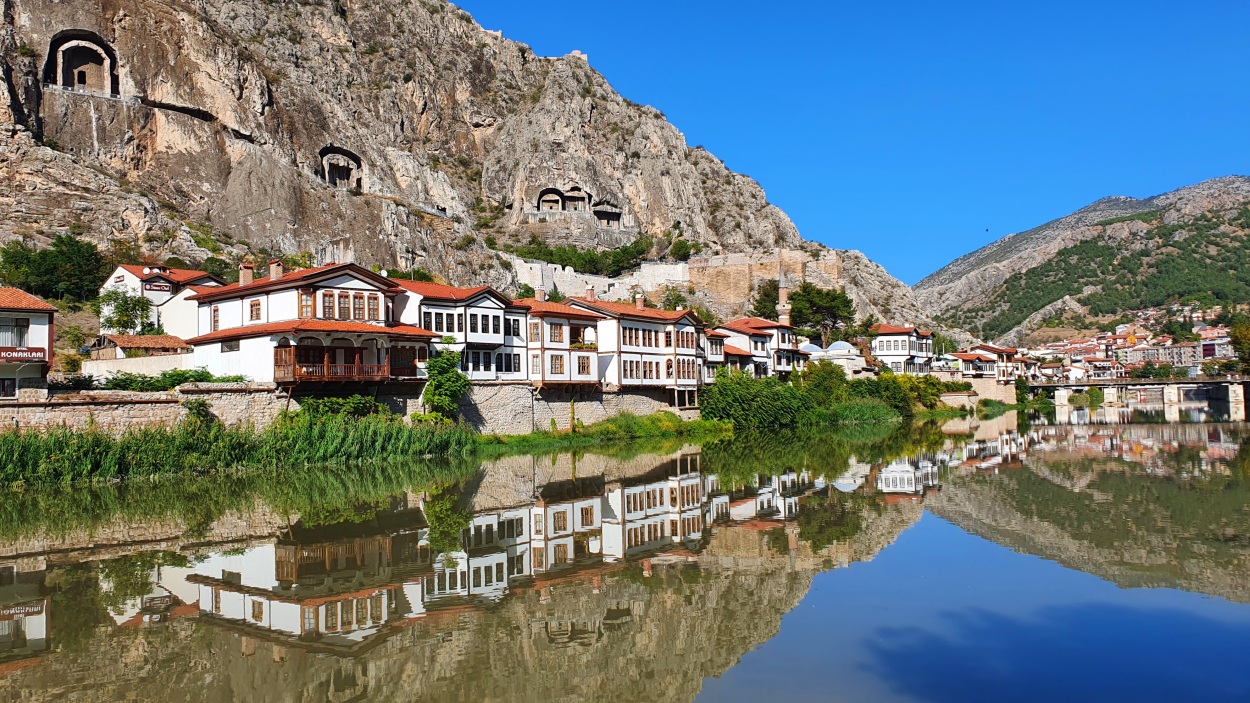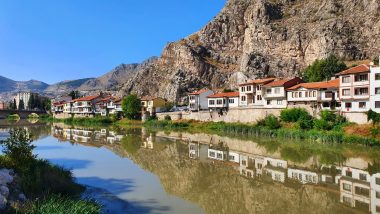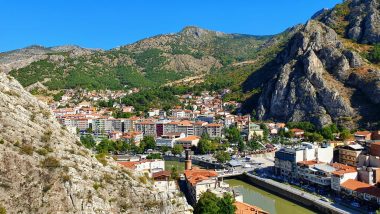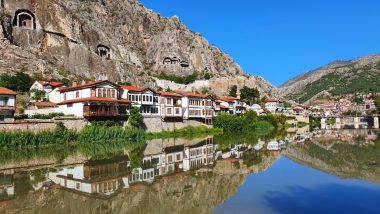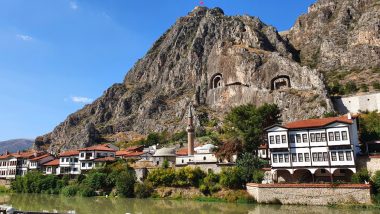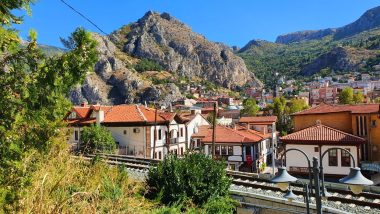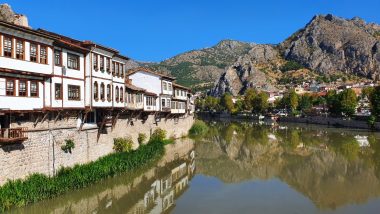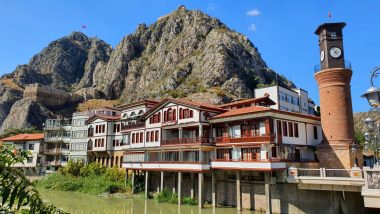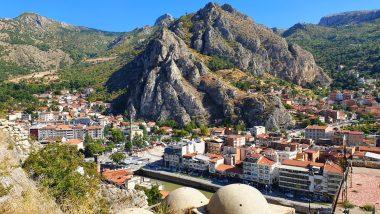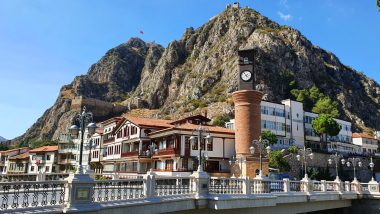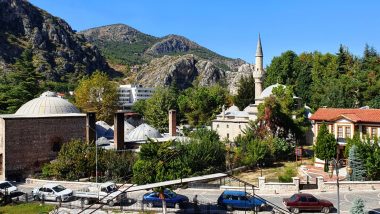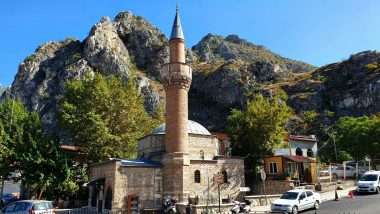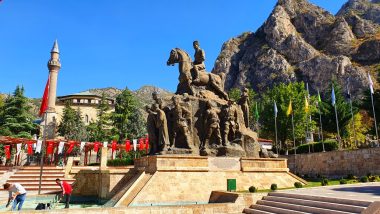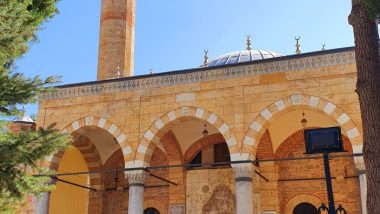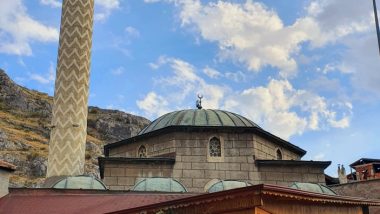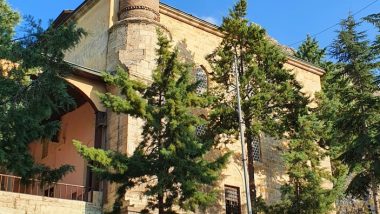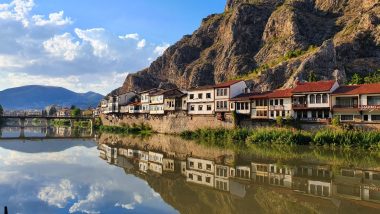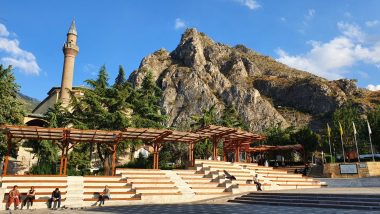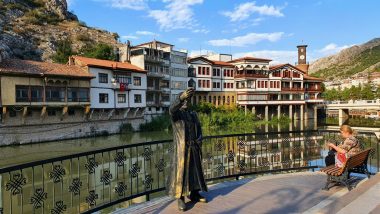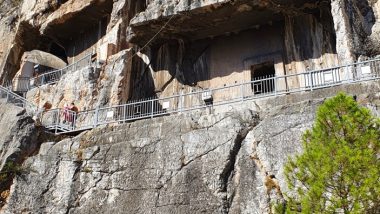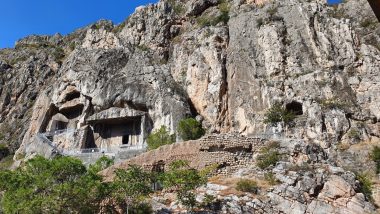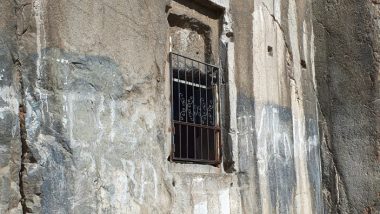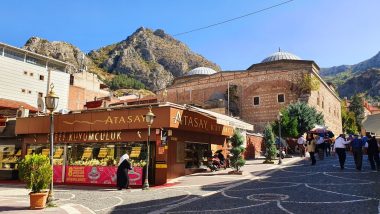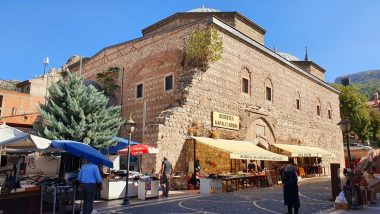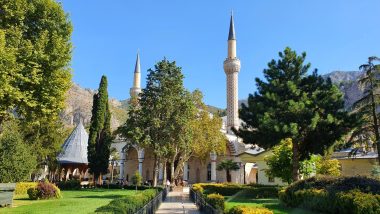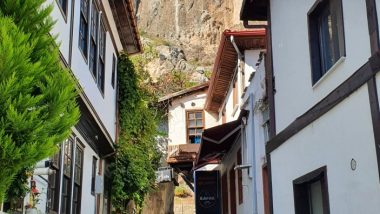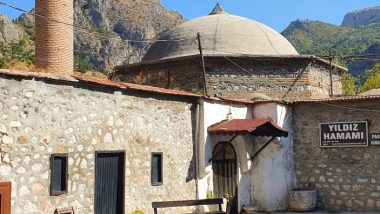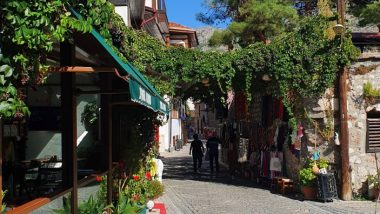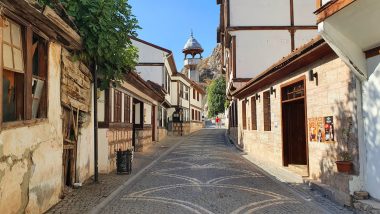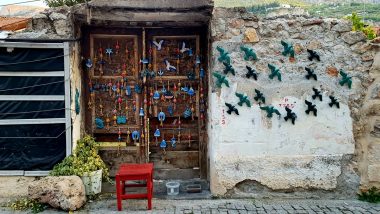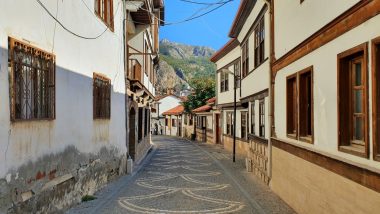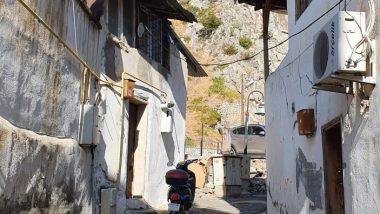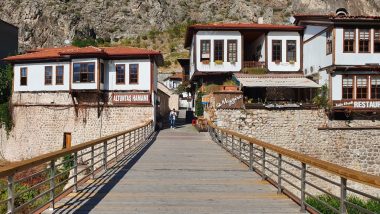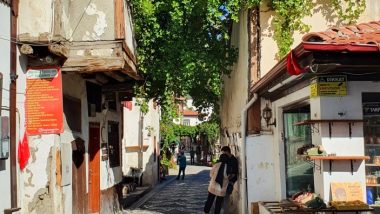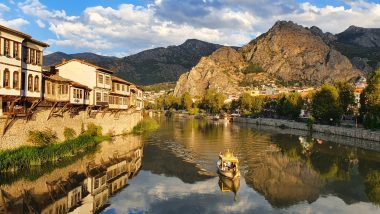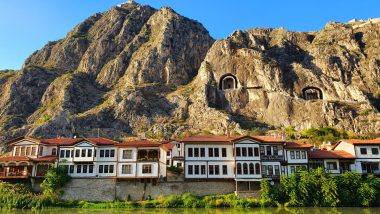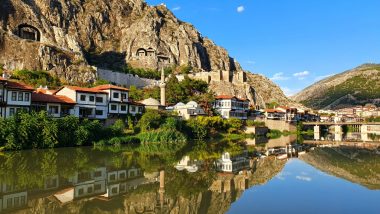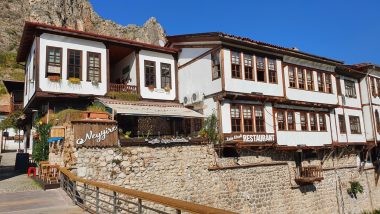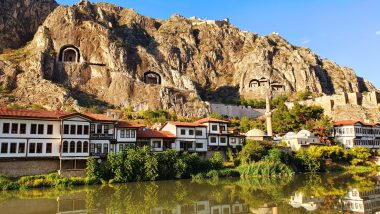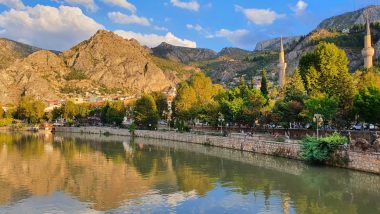Amasya is located in northern Turkey in the narrow and rocky valley of Yeşil River. Towering above the minarets and the medreses are pockmarks of Pontic tombs (🎫 10 TRY), etched into the highrise bluff and guarded by a lofty citadel. Amasya’s setting may evoke high drama, but life here unfolds slowly. It was the capital of the kings of Pontus until about 183 BC, and then it became a free city and the administrative center of a large territory by Pompey in 65 BC. In the 2nd century CE, it received the titles “metropolis” and “first city” under the Romans. It was the capital of the Turkmen Dānişmend emirs until annexed by the Seljuq ruler Qïlïc Arslan a century later. It became a significant center of learning in Anatolia after being incorporated into the Ottoman Empire by Sultan Bayezid I (reigned 1389–1402). A castle mentioned by the ancient geographer Strabo, who was born there, now lies in ruins on the summit of a rock, though it was restored during the Byzantine and Ottoman periods. Old buildings are concentrated on the heavily populated southern side of the river, connected to the north by five bridges. Earthquakes damaged many monuments in 1734, 1825, and 1939. Notable medieval buildings include several mosques and a library. We enjoyed delicious manti (a type of dumpling popular in most cuisines of the South Caucasus, Balkans, Central Asia, and Afghanistan) in the famous Anadolu Mantı Evi (59 to 72 TRY/meal). After that, we took a beer in a busy Sokak pub (Efes beer 0,5 l / 60 TRY) with a local rock band.
Parking location – Amasya: 40.663912N 35.843941E


